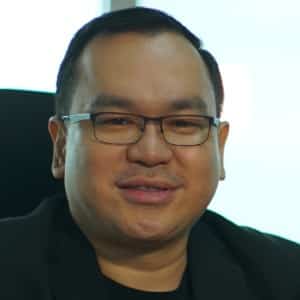There are certain people that we hold with great respect, gratitude, and appreciation for going out of their way to help us grow as a person and as a professional. I have been privileged to be mentored over the years in the area of sales training by one such person. I am the trainer that I am today due in large part to his patient coaching and mentoring as we travelled the world facilitating training sessions.

Mark G. Evans, who is currently the Director of Global Commercial Learning at Colgate-Palmolive (where we used to work together), has been a good friend across the miles for many years. I thank him for taking time from his busy schedule to share his thoughts on the subject. May this article spark something that may make a difference in the reader.
Ian: Hi Mark! You’ve built a remarkable career in sales and sales training. Can you please share how you started, pivoted and sustained your success over the years?
Mark: Ian, I got into this field by complete accident. I’ve always had an interest in helping others. I was a camp counsellor and always had the ability to teach / coach (i.e. swimming, basketball, football, skiing etc.). If you have the ability to watch, learn and look to break down a situation and then help the individual to reach a level of capability & skill, that’s something very special.
“If you teach a man to fish, he will never go hungry.” Selfishly, I get great joy in helping others. I was educated by the Jesuits and you learn from the very beginning the importance of sharing your knowledge and experience with others.
I’m also a curious person. I’m constantly asking: “Why?” and Googling like crazy searching for more information to gain a baseline level of understanding for things that I’m fascinated about.
Ian: You have been in training for three decades now. What changes and transformations have you seen throughout this time in the training space? What do you think has remained and still holds true until this day?
Mark: As much as things change, they stay the same. What I mean by that is you always need to meet the learner where they are not where you want them to be. All too often we want to rush the learner to the next level without demonstrating “in the flow of work” that they can actually put the skills to work. Think about it, you can’t learn kung fu by watching Bruce Lee movies.
If you want to build your skills in martial arts you should start with what I call:
ALPA. A (assess), L (learn), P (practice), A (apply). You need to do the assessment, what can they do or not do. Unfortunately, people rush with a solution which they either have seen work before or is that shiny new solution. Would you go to a doctor who just gave you a prescription without doing a proper diagnosis? Of course not.
But it happens all too often because in learning we want to add immediate value. Sometimes you need to go slow before you can go fast. Learning is sometimes the most expensive solution and we need to do our homework and come up with the best viable option which builds capabilities, skills and also helps to contribute to the success of the overall business objective.
Only after the Assessment has been done and the gap or skills have been properly identified can you begin to think about the Learning which you want to put in place, which allows the learner to Practice to build confidence and then transition to Application which is taking these newly found skills and applying them back to their job. I’ve been doing this for almost 30 years and this simple capability building model has served me very well.
Ian: In your perspective and first-hand experience, what type/s or channel/s of training is most relevant in today’s world? Can you share why?
Mark: I covered some of this in my last commentary. In my opinion, the theory is great and I have tremendous respect for what others have to say when it comes to learning and capability building. What works best are often simulations that model the “real world”. Case studies, role plays, online business simulations (Business Acumen) focus on what the learner may see on a daily basis. We often film the role plays or business simulations and ask the participants to provide coaching to those that role played or demonstrated their new skills.
This is no different from what the legendary Coach John Wooden did when conducting practice with his teams. Repetition is key, knowing what to do and then knowing when to do it when it matters build confidence & chemistry and also an environment of learning. The learners will look to coach and develop those that are going through the experience. Trust me this stuff works and I’ve found it builds the most talented teams.
Ian: What tips can you give those who are just starting their training journey and aim to be successful trainers in the future?
Mark: Be a lifelong learner. What I mean by this is people need to see that you “walk the walk not just talk the talk”. I read at least two books a month and as I mentioned before, super curious. If you really want to be successful you need to have the mindset of a 6-year-old.
What does a 6-year-old do? They always ask why to tell me more and they have no fear. They’re not afraid to make mistakes. They view the world as one of opportunity or exploration. If they make a mistake or don’t succeed they continue to press on. All too often when we get into this space we’re afraid to FAIL. Don’t think of this word as a failure. Have a growth mindset which means I’m not there yet but I’m learning. Carol Dweck, one of my professors at Stanford does a wonderful job explaining this. For me FAIL =’s First, Attempt, In, Learning. This has been my mindset every time I try something new.
Ian: What nuggets of advice can you share with today’s training practitioners in order to maintain relevance, productivity, and success?
Mark: I think you need to be curious about the learning space and be careful not to look to chase too many shiny things. I have great respect for Josh Bersin, Marshall Goldsmith and others but at the end of the day, you need to be comfortable doing what’s right for your company, culture, business and the learner.
You also need to view your job as someone who has the responsibility of building the skills of the organization so it can have an immediate effect on the business. Measurement is key. The learning objective has to be connected to the business objective. All too often this is a miss. If you want someone to respect you and the learning function show them that you’ve thought about this.
Ian: Finally, in your perspective, what are the best ways for one to become a life-long learner?
Mark: I think it’s in your DNA and you also need to have some role models. For me, my parents are both in their late 80’s and they’re constantly on their SMART devices connecting with their grandkids or kids. My father always has a book with him and during the holidays there is a huge jigsaw puzzle which sits on a table. Each of us makes an effort to get it done while everyone is at home. My pop and niece are determined to get it done.
You know that I love sports and now when I watch games yes I want my team to win but I’m more focused on the decision made by the coach or the upskilling when it comes to player development. Steph Curry, Katie LeDecky, Sean White, Serena Williams and Tom Brady, how have they been able to get to this level?
Yes, some of it is a natural talent but more often than not it’s coaching. For me, this is the holy grail and one that I’m very interested in. As you know John Beilein the former coach at the University of Michigan and I’m hoping he will continue to invest in this curious lifelong learner.
Ian: There you have it, some great sharing from one of the best in the business. Hope you learned a thing or two that can help you further develop your sales training career!


















